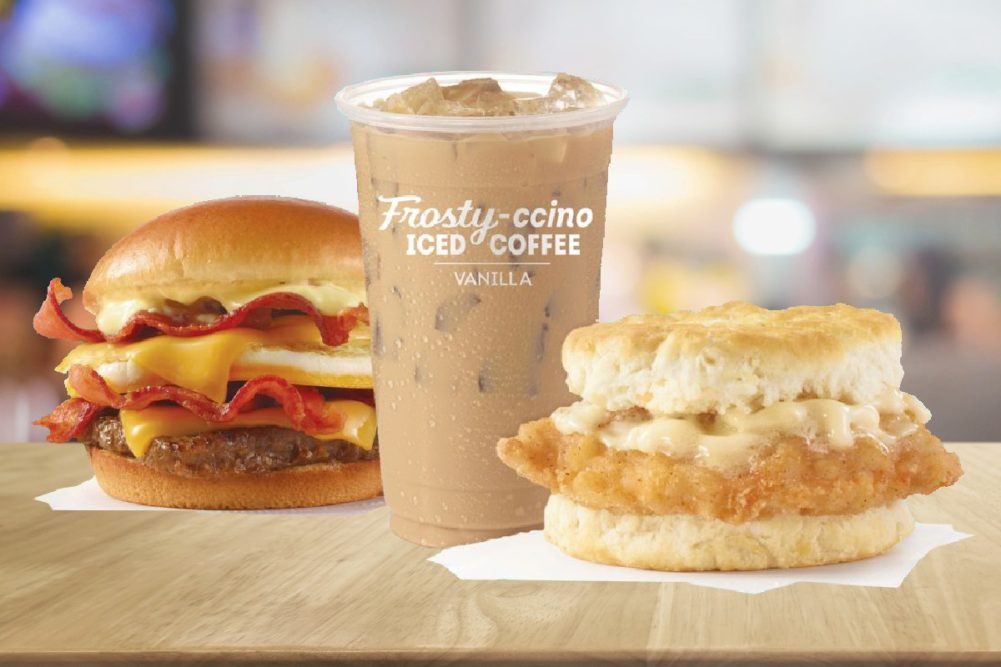DUBLIN, OHIO — Some Wendy’s customers may be asking, “Where’s the beef?” The hamburger chain expects temporary shortages as beef suppliers across North America face production challenges, said Todd A. Penegor, president and chief executive officer.
“It is tight out there today,” Penegor said during a May 6 earnings call. “We're still delivering beef to every restaurant every two or three days. But from time to time, there could be some items that we're out of stock on.”
The company has shifted its marketing efforts in the short term to focus on chicken products, he added.
“We do believe it is temporary, and we're close with our big supply partners, and we have several of them on the fresh beef front, and we do believe we'll work through this in short order,” he said. “And I know there were a lot of reports out there yesterday that we were completely out of beef in many restaurants. And one of the things that people can do in … the digital app and on wendys.com is if you're tight on beef, you can turn it off in the mobile order. Doesn't mean you're out of beef at the restaurant level, but you wouldn't want to really disappoint a consumer if they looked in mobile order, you said you had beef, and then they drove to the restaurant and you were out.
“So what folks did on abundance of caution is make sure that the customer wasn't disappointed, but we could have still had beef in the restaurant. So temporary in nature, calendar's being adjusted. We do think it's probably a couple of weeks of challenging tightness that we'll have to work through, and then we'll come out the other side, working with our partners and continue to support our business.”
Wendy’s net income for the first quarter ended March 29 was $14.44 million, equal to 6¢ per share on the common stock, down from $31.89 million, or 14¢, in the prior-year period. The decrease in net income resulted from lower operating profit based on a decline in company-operated restaurant margin, higher organization and realignment costs, impairment of long-lived assets and higher general and administrative expense, as well as a higher effective tax rate.
Revenues totaled $404.96 million, down from $408.58 million.
Same-restaurant sales were flat in the United States and down 0.2% on a global basis. Performance during the quarter benefited from the successful relaunch of breakfast at Wendy’s restaurants nationwide, Penegor said.
“Breakfast performed extremely well out of the gate, pushing US same-restaurant sales to plus 16% in the first week,” Penegor said. “We then began to feel the impacts of COVID-19 in the second week of March and continue to see the impacts on our business in many of the communities we serve. On the positive side, we have begun to see improvements in April sales with the most recent week improving to down approximately 2% versus the last week of March, which was down 29%.”
Across the restaurant industry, the breakfast daypart has been especially challenged as many consumers work from home and travel less. Wendy’s management is optimistic its breakfast sales will improve as restrictions are loosened.
“Our new daypart has been sustaining at approximately 8% of US sales throughout the month of April,” Penegor said. “Franchisees have been very pleased with this daypart as it is providing a sales driver that they did not have previously. It has also proven to be profitable even at lower sales levels than we had anticipated.”
Wendy’s has narrowed its focus to core menu items to simplify operations and accelerate drive-thru service during the crisis.
“We'll continue to watch consumer response and see if some of these things should earn the right to get back on to the menu in the future,” Penegor said. “But we haven't dramatically pulled a ton of stuff out. It was just some really slow movers to help a little bit. And we haven't introduced a lot of new products, not a lot of new LTOs, not new things like a plant-based offering. Because we don't want to have folks get distracted on something new.”
The company remains cautious on reopening its restaurants and plans to set up dining rooms to allow for social distancing and safety, Penegor said. He described a phased approach that would begin with extending hours of operation and would eventually include allowing for carryout. Nearly all Wendy’s restaurants are currently set up for drive-thru or delivery only.
“And then ultimately, get those restaurant dining rooms open with the appropriate social distancing set up in those restaurants,” Penegor said. “But we'll be smart about it. We'll be safe about it.”
Wendy’s Co. has withdrawn its full-year and long-term financial outlook due to the volatility and uncertainty surrounding the impact of COVID-19 on the global economy. To help its franchisees weather the crisis, the company has provided deferrals of royalty, advertising and rent payments to help with cash preservation in the short term, which will be offset by savings in capital expenditures, said Gunther Plosch, chief financial officer.
“We are confident that these reductions will allow us to continue to invest in our business for growth, while managing the dynamic environment we are operating in currently,” Plosch said.
Shares of the Wendy’s Co. on May 6 ended the day at $20.21, up $1.40, or 7.4%, from the previous close.


